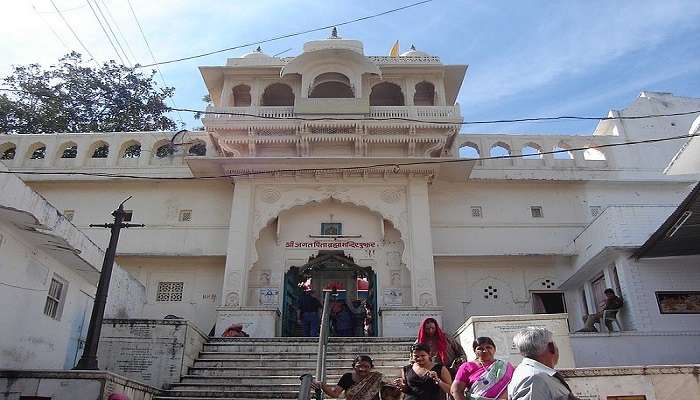Architecture And Design Of Shivoham Shiva Temple A Strange Miracle In 2026

Shivoham Shiva temple in Bangalore is one of the most popular places in Bangalore featuring architectural excellence as well as spiritual sanctity. This attracts devotees who are looking to have spiritual experiences like never before, as well as a wide range of tourists. The key attraction in this fascinating temple is the 65-feet-tall statue of lord Shiva which reflects the architectural genius found in the Indian subcontinent. In this article, we will explore all about the unique architecture and design of Shivoham Shiva temple.
Shivoham Shiva Temple: An Overview And History
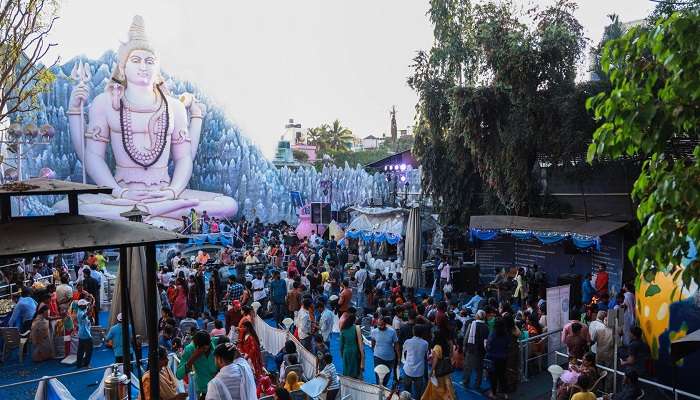
One of the most prominent features of Shivoham Shiva temple is its giant sixty-five-foot statue. It represents Lord Shiva standing majestically over the city’s skyline. This serves as an exceptional landmark for the residents and visitors alike in Bangalore. Shivoham Shiva temple’s history starts with the first name given to Shiv Mandir, where Sringeri Shankaracharya inaugurated it on February 26th1995. It was however renamed after that to its current name by Ravi V Melwani who established it to provide an amazing environment meant for spiritual contemplation and worship.
Kashinath carved out the main idol of Lord Shiva. The temple became known as “Shivom” (I am Shiv) or “Shwet” (white). After being named so, it became known as a place that shows people how they can get moksha through ancient principles taught by Vedas.
Tip: The temple’s rich antiquity adds profundity to its religious environment making it an obligatory visit place for those wanting deeper contact with higher divine powers.
Also Read: Weekend Getaways From Bangalore
Architecture And Design
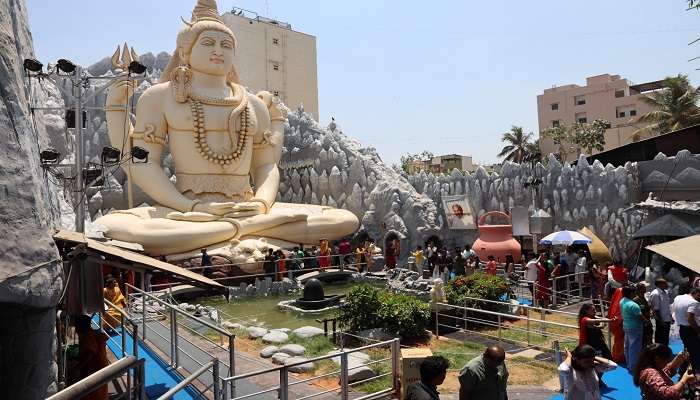
The Shivoham Shiva temple exemplifies how traditional and modern architectural elements blend together. A 25-foot-tall Lingam at the entrance, which is the tallest in Bengaluru, attracts visitors’ attention. The main focal point is a 65-foot statue of Shiva in his meditation mode with the river Ganges flowing from his locks. This statue, combined with Ganesha’s one built in 2003 about 32 feet high, forms the heart of the Shivoham temple.
The Ganesha statue here symbolises the ‘Vighna Vinashak’ or remover of obstacles. Worshippers tie saffron threads on this deity to seek blessings and get their wishes granted. Moreover, you’ll find a healing stone or Upchaar Patthar as a symbol of divine intervention. People with faith in Lord Shiva worship these stones and pray for miracles. People believe that worshipping this stone frees them from their sufferings.
The temple’s layout aims to take devotees on a spiritual journey starting with a grand entrance before leading to different shrines devoted to various aspects of Shiva. The hall for meditation has beautiful paintings on its walls and good acoustics made for chanting hymns; it is a quiet place where you may meditate.
Detailed Design Elements Of Shivoham Shiva Temple

As one enters the gate, carved images of Hindu gods and goddesses, as well as mythological scenes, lead them into this spiritual sanctuary. Made from reinforced concrete cement covered with white marble dust, Lord Shiva’s image exhibits some divine attributes, such as the third eye displayed on the forehead and serpents around the neck.
The holy river Ganges flows from Lord Shiva’s hair. While Lord Shiva is seen in a meditated position, his damaru and Trishul are also visible, as mentioned in the Shiva Purana. Surrounding it are several shrines dedicated to different forms, such as Nataraja, Ardhanarishvara, and Lingam. Each shrine signifies various features of God’s personality, thus narrating distinct tales from Hindu mythology.
By carving out cave-like structures within the temple complex that recreate five “holy dhams” (nerve centres) and the twelve “jyotirlingas” (the holy lights), inside its sanctum sanctorum. This magnificent architecture has allowed those who come here to make the pilgrimage.
Tip: The temple has intricate design elements that show the richness of Hindu culture.
Related Post: Camping Near Bangalore
Related Post: Camping Near Bangalore
Shivoham Shiva Temple Timings
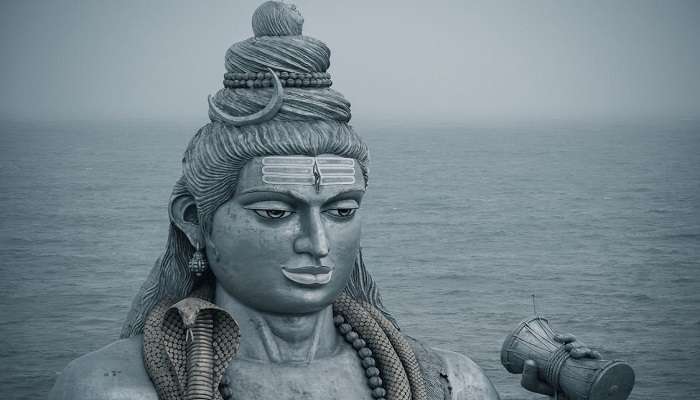
The temple can be visited any time of the day since it is open from 5 a.m. to 8 p.m. every day for aarti. Otherwise, it is open throughout the day. During important Hindu festivals, especially Maha Shivaratri, the temple carries out special poojas and ceremonies which attract a lot of people to visit.
On Mahashivratri, the temple organises Shiva antakshari or jagrans to connect the pilgrims with Lord Shiva. Moreover, a laser and sound show is also organised on Shiva’s special day. The temple attracts more than 2,00,000 visitors on this single day.
Tip: You can also be there early in the morning or late evening for a peaceful visit and participation in aarti ceremonies.
Location

Situated centrally on Old Airport Road Murgesh Pallya Bangalore, Shivoham Shiva Temple, is easily accessed by several modes of transportation including buses, auto-rickshaws and taxis.
Tip: Rather than boarding rickshaws and buses that may leave you with less money after reaching the destination, just go for public transport so that you don’t have to spend too much to get here.
Related Post: Places To Visit In Bangalore Within 50 Kms
Journey To Shivoham Shiva Temple
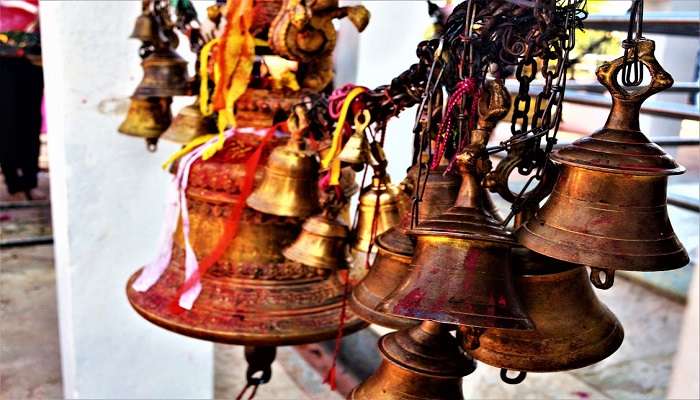
The visitors of Shivoham Shiva temple need to make sure that they maintain a respectful attitude within the temple premises. One can also contribute to the cleanliness of this beautiful temple just by disposing of any waste in the dustbins. One can also take part in the cleaning drives inside the temple if you get a chance.
Always make sure that you adhere to the guidelines of the temple like removing shoes and maintaining silence wherever required. One can observe certain rituals at the temple and learn more about the culture and religious beliefs associated with Hinduism.
You May Also Like To Read: Street Food In Bangalore
Whether you are a devout follower or a curious traveller, the Shivoham Shiva temple promises an enriching journey into the heart of India’s spiritual traditions. The Shivoham Shiva temple serves as a reminder of Hinduism’s rich cultural heritage and its deep spirituality. Its magnificent architecture, together with serene spiritual surroundings, make visits unique experiences for anybody who comes here. Also, this sacred place provides opportunities for meditation, praying etc., rather than simply worshipping alone. So plan your trip to Bangalore today and explore the beauty of its unique temples.
For our editorial codes of conduct and copyright disclaimer, please click here.
Cover Image Credit:Rameshng for Wikimedia commons
Frequently Asked Questions About Shivoham Shiva Temple
What is special about Shivoham Shiva temple?
The 65-feet-tall statue of Lord Shiva, 32-feet-tall Ganesha statue, 25-feet-tall Shiva Linga, Panch Dham Yatra and Jyotirling Yatra make the Shivoham Shiva temple popular.
What are the aarti timings at Shivoham Shiva temple?
The Shivoham Shiva temple timings for Mangla Aarti are as follows: Mangla Aarti: 5 am Madhya Aarti: 12 pm Sandhya Aarti: 6 pm Shayan Aarti: 9 pm.
What is the Shivoham Shiva temple location?
Kemp Fort Mall, 97, HAL Old Airport Road, Parking, Ramagiri, Murgesh Pallya, Bengaluru, Karnataka 560017.
Which is the nearest bus stop to Shivoham Shiva temple in Bangalore?
Parvathi Nagara bus stop is at a 6-minute walking distance from the Shivoham Shiva temple.
Which metro line stops near Shivoham Shiva temple?
The Green Line metro line is near Shivoham Shiva temple. The nearest metro station is the Indiranagar metro station.
People Also Read:
Shri Jagannath Temple Hyderabad Arulmigu Ramanathaswamy Temple Omkareshwara Temple Coorg

Unveil the hidden treasures of the globe and turn every travel dream into reality. As a Content Writer, I am passionate enough to craft stories from ancient wonders to modern marvels. My words paint the picture-perfect itinerary for unforgettable experiences. Let my words be your trusted guide to immerse in the diverse culture and discover the beauty of the unknown.




